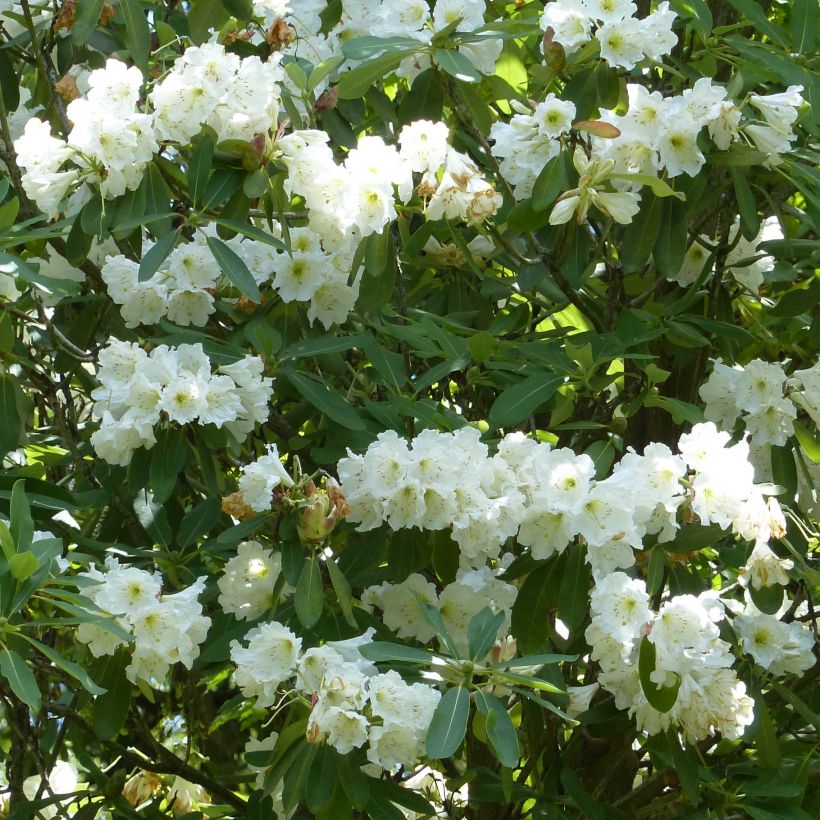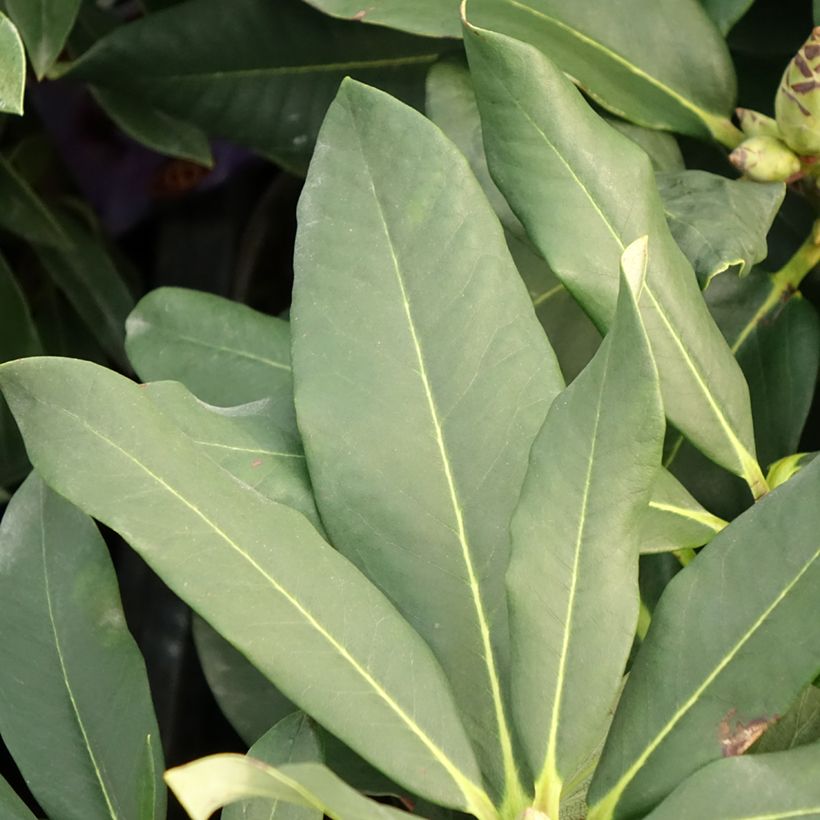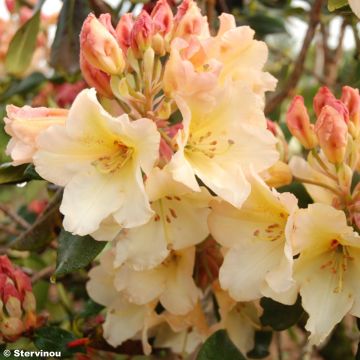

Rhododendron Polar Bear


Rhododendron Polar Bear
Rhododendron Polar Bear
Rhododendron x Polar Bear
Rhododendron
Well planted, looking forward to seeing it grow.
Nath44, 13/01/2025
Special offer!
Receive a €20 voucher for any order over €90 (excluding delivery costs, credit notes, and plastic-free options)!
1- Add your favorite plants to your cart.
2- Once you have reached €90, confirm your order (you can even choose the delivery date!).
3- As soon as your order is shipped, you will receive an email containing your voucher code, valid for 3 months (90 days).
Your voucher is unique and can only be used once, for any order with a minimum value of €20, excluding delivery costs.
Can be combined with other current offers, non-divisible and non-refundable.
Home or relay delivery (depending on size and destination)
Schedule delivery date,
and select date in basket
This plant carries a 24 months recovery warranty
More information
We guarantee the quality of our plants for a full growing cycle, and will replace at our expense any plant that fails to recover under normal climatic and planting conditions.

Would this plant suit my garden?
Set up your Plantfit profile →
Description
Rhododendron 'Polar Bear' is a vigorous variety with a large growth habit, ideal in an ericaceous bed. Its summer flowering offers large white trumpet-shaped inflorescences that emit a fragrance reminiscent of Lilies. This bush has a very upright habit and is adorned with emerald green foliage. An aromatic and visual spectacle in July and August!
Rhododendron 'Polar Bear' is a hybrid between R. auriculatumand R. diapretes, a variety obtained by John Barr Stevenson in 1926. The result is an extremely vigorous and splendid plant (characteristics inherited from auriculatum) that flowers late (typical of diapetres). Unlike the majority of rhododendrons, this large variety is a summer star with its late flowering as magnificent as it is fragrant. Its inflorescences appear in July and August, in corymbs of large white tubular flowers. This very tall cultivar can reach a height of 5m (16ft) or more if it is happy with its location. It will also spread in width! The bush with its ample habit has young shoots of a bluish hue and large evergreen leaves of an emerald green colour.
Rhododendron 'Polar Bear' is an ericaceous bush. It will find its place in shade or partial shade as its flowers will be damaged by the sun. The soil must be moist, humus-rich, and well-drained, with an acidic pH, it does not tolerate limestone. The last condition is that it must be planted sheltered from prevailing winds. It is a hardy plant that can withstand temperatures down to -12°C (10.4°F), like the majority of rhododendrons. Plant Rhododendron 'Polar Bear' in an ericaceous bed, as a specimen plant, or in a hedge. In the case of a bed, it should be cultivated in the background due to its strong growth. Combine it with Chinese azaleas, andromedas (Pieris), mountain laurels (Kalmia), Japanese maples (Acer japonicum), or other smaller rhododendrons at maturity such as the 'Bloombux', 'Percy Wiseman', or the surprising R. linearifolium cultivars.
Report an error about the product description
Rhododendron Polar Bear in pictures






Plant habit
Flowering
Foliage
Botanical data
Rhododendron
x
Polar Bear
Ericaceae
Rhododendron
Cultivar or hybrid
Other Large Rhododendrons
View all →Planting and care
Plant the Rhododendron 'Polar Bear' in a shady or semi-shady position, protected from cold and drying winds, in a moist, humus-rich, and light soil with an acidic tendency. Like all plants in the heath family, it does not tolerate limestone soils or heavy soils saturated with water in winter. Dig a hole three times larger than the pot. Soak the root ball in non-limestone water and plant the bush at the collar level, in a mixture consisting of leaf compost, gravel or pumice, and loam. Water thoroughly and keep the soil moist in summer. Azaleas and Rhododendrons have a shallow root system, so they are susceptible to long periods of drought. Therefore, it is advisable to enrich the soil with humus and provide abundant watering during dry periods. Additionally, this root system is not very strong, so it is essential to lighten heavy soils with draining materials (gravel, pumice, clay pellets) at planting. Apply a mulch of crushed pine bark around the base of the bush every spring to maintain soil moisture and acidic pH. Maintenance involves removing faded flowers in summer and removing any dead branches.
Azaleas and Rhododendrons can sometimes be attacked by weevils that eat the edges of leaves and rootlets, as well as by the famous "rhododendron beetle" which does not usually cause significant damage. Yellowing of leaves (chlorosis) in Rhododendrons indicates poor assimilation of iron from the soil and can lead to premature death of the plant. While limestone is often the cause, poorly drained soil or deep planting can also explain this phenomenon.
Planting period
Intended location
Care
-
, onOrder confirmed
Reply from on Promesse de fleurs
Similar products
Haven't found what you were looking for?
Hardiness is the lowest winter temperature a plant can endure without suffering serious damage or even dying. However, hardiness is affected by location (a sheltered area, such as a patio), protection (winter cover) and soil type (hardiness is improved by well-drained soil).

Photo Sharing Terms & Conditions
In order to encourage gardeners to interact and share their experiences, Promesse de fleurs offers various media enabling content to be uploaded onto its Site - in particular via the ‘Photo sharing’ module.
The User agrees to refrain from:
- Posting any content that is illegal, prejudicial, insulting, racist, inciteful to hatred, revisionist, contrary to public decency, that infringes on privacy or on the privacy rights of third parties, in particular the publicity rights of persons and goods, intellectual property rights, or the right to privacy.
- Submitting content on behalf of a third party;
- Impersonate the identity of a third party and/or publish any personal information about a third party;
In general, the User undertakes to refrain from any unethical behaviour.
All Content (in particular text, comments, files, images, photos, videos, creative works, etc.), which may be subject to property or intellectual property rights, image or other private rights, shall remain the property of the User, subject to the limited rights granted by the terms of the licence granted by Promesse de fleurs as stated below. Users are at liberty to publish or not to publish such Content on the Site, notably via the ‘Photo Sharing’ facility, and accept that this Content shall be made public and freely accessible, notably on the Internet.
Users further acknowledge, undertake to have ,and guarantee that they hold all necessary rights and permissions to publish such material on the Site, in particular with regard to the legislation in force pertaining to any privacy, property, intellectual property, image, or contractual rights, or rights of any other nature. By publishing such Content on the Site, Users acknowledge accepting full liability as publishers of the Content within the meaning of the law, and grant Promesse de fleurs, free of charge, an inclusive, worldwide licence for the said Content for the entire duration of its publication, including all reproduction, representation, up/downloading, displaying, performing, transmission, and storage rights.
Users also grant permission for their name to be linked to the Content and accept that this link may not always be made available.
By engaging in posting material, Users consent to their Content becoming automatically accessible on the Internet, in particular on other sites and/or blogs and/or web pages of the Promesse de fleurs site, including in particular social pages and the Promesse de fleurs catalogue.
Users may secure the removal of entrusted content free of charge by issuing a simple request via our contact form.
The flowering period indicated on our website applies to countries and regions located in USDA zone 8 (France, the United Kingdom, Ireland, the Netherlands, etc.)
It will vary according to where you live:
- In zones 9 to 10 (Italy, Spain, Greece, etc.), flowering will occur about 2 to 4 weeks earlier.
- In zones 6 to 7 (Germany, Poland, Slovenia, and lower mountainous regions), flowering will be delayed by 2 to 3 weeks.
- In zone 5 (Central Europe, Scandinavia), blooming will be delayed by 3 to 5 weeks.
In temperate climates, pruning of spring-flowering shrubs (forsythia, spireas, etc.) should be done just after flowering.
Pruning of summer-flowering shrubs (Indian Lilac, Perovskia, etc.) can be done in winter or spring.
In cold regions as well as with frost-sensitive plants, avoid pruning too early when severe frosts may still occur.
The planting period indicated on our website applies to countries and regions located in USDA zone 8 (France, United Kingdom, Ireland, Netherlands).
It will vary according to where you live:
- In Mediterranean zones (Marseille, Madrid, Milan, etc.), autumn and winter are the best planting periods.
- In continental zones (Strasbourg, Munich, Vienna, etc.), delay planting by 2 to 3 weeks in spring and bring it forward by 2 to 4 weeks in autumn.
- In mountainous regions (the Alps, Pyrenees, Carpathians, etc.), it is best to plant in late spring (May-June) or late summer (August-September).
The harvesting period indicated on our website applies to countries and regions in USDA zone 8 (France, England, Ireland, the Netherlands).
In colder areas (Scandinavia, Poland, Austria...) fruit and vegetable harvests are likely to be delayed by 3-4 weeks.
In warmer areas (Italy, Spain, Greece, etc.), harvesting will probably take place earlier, depending on weather conditions.
The sowing periods indicated on our website apply to countries and regions within USDA Zone 8 (France, UK, Ireland, Netherlands).
In colder areas (Scandinavia, Poland, Austria...), delay any outdoor sowing by 3-4 weeks, or sow under glass.
In warmer climes (Italy, Spain, Greece, etc.), bring outdoor sowing forward by a few weeks.


















































